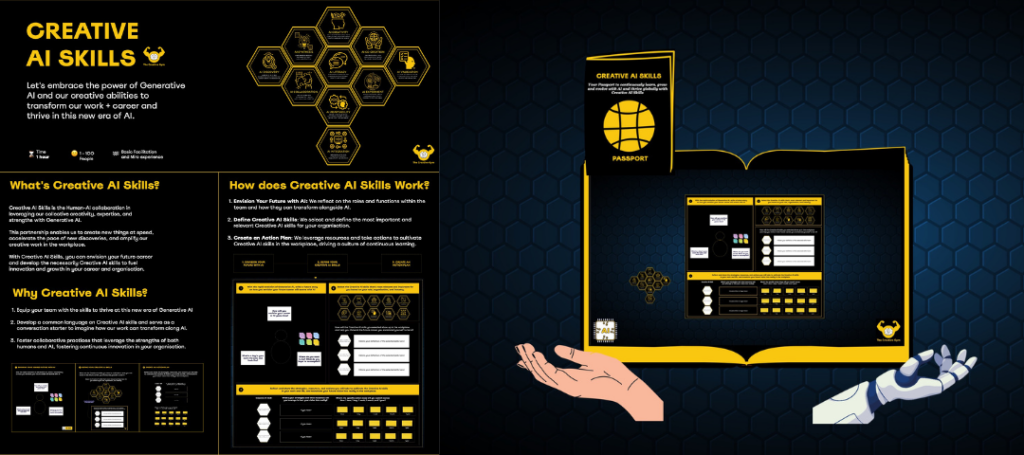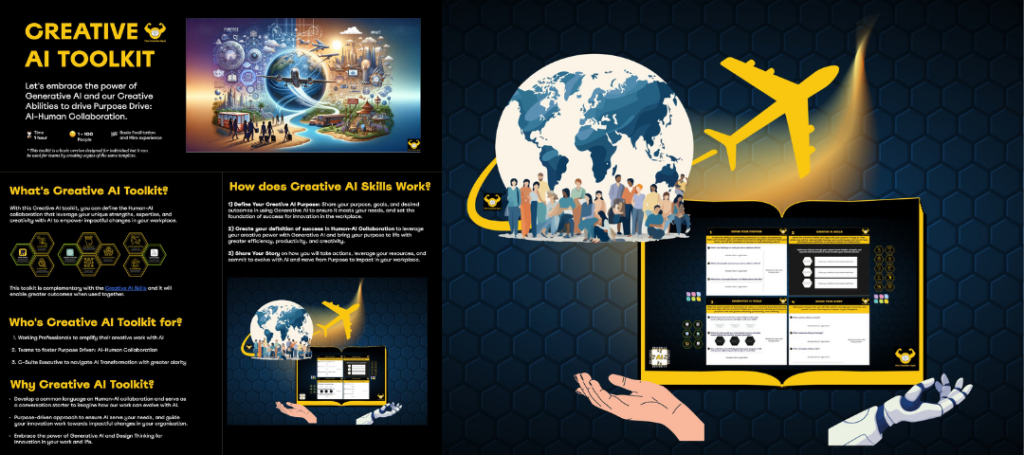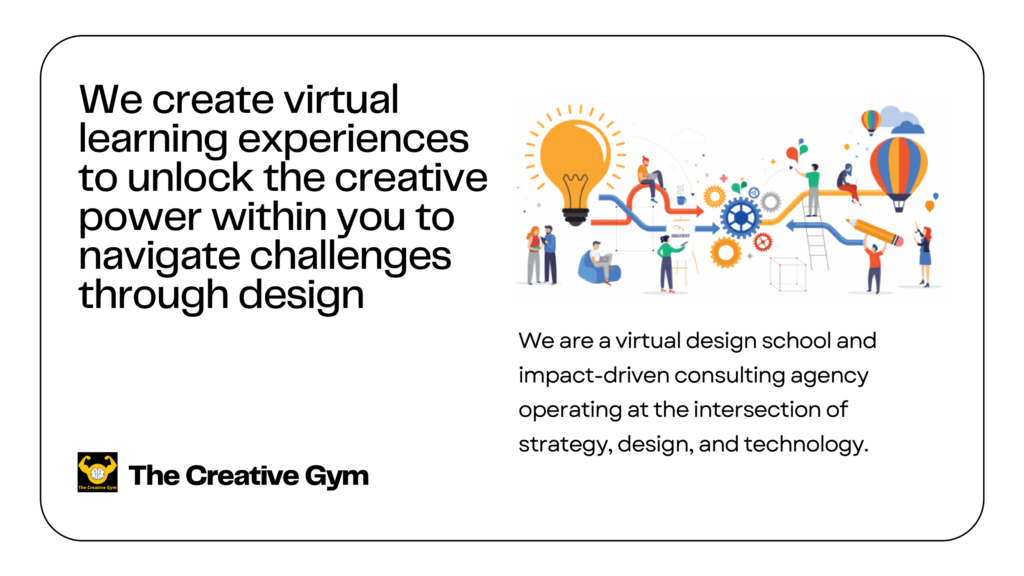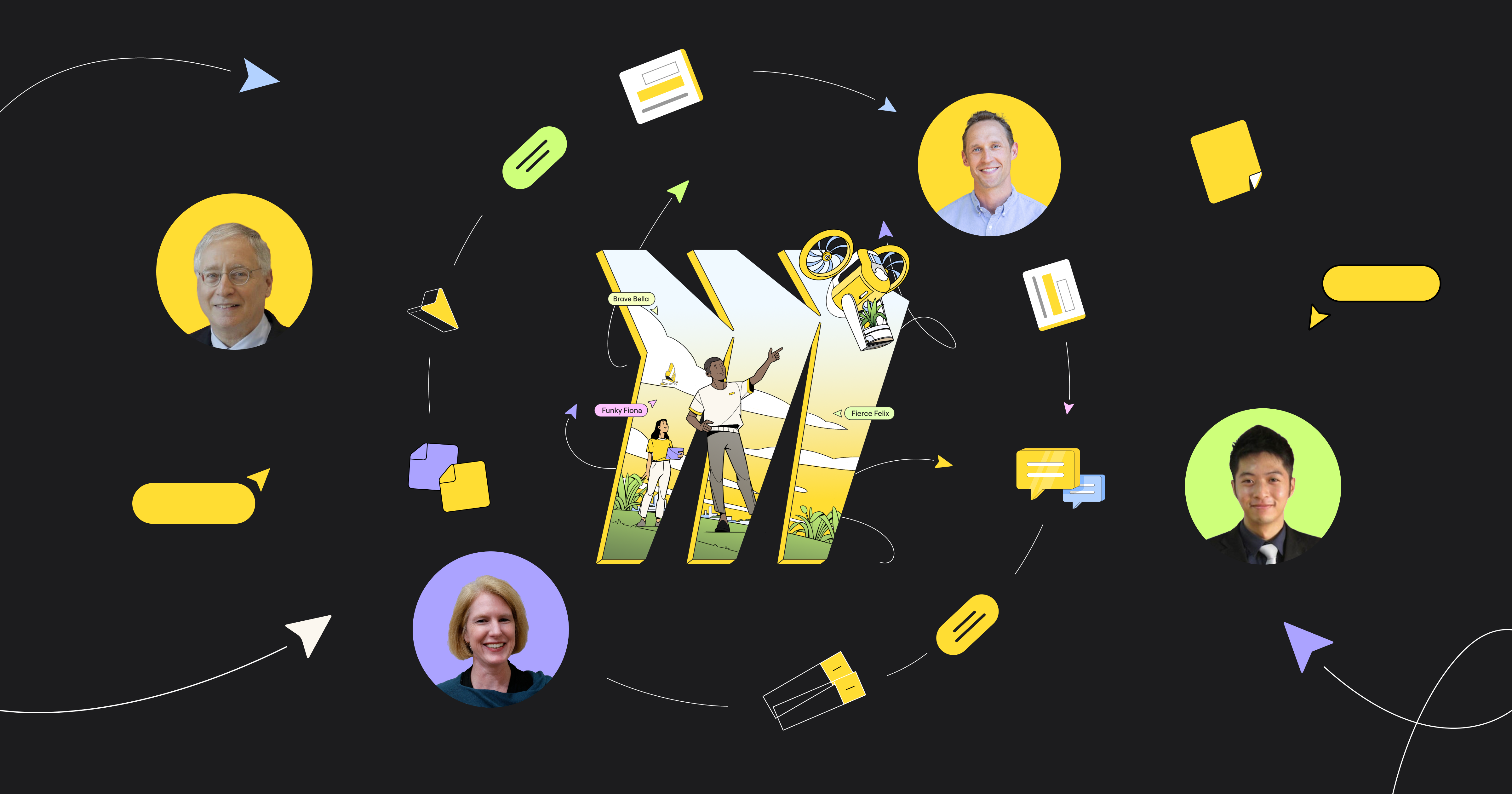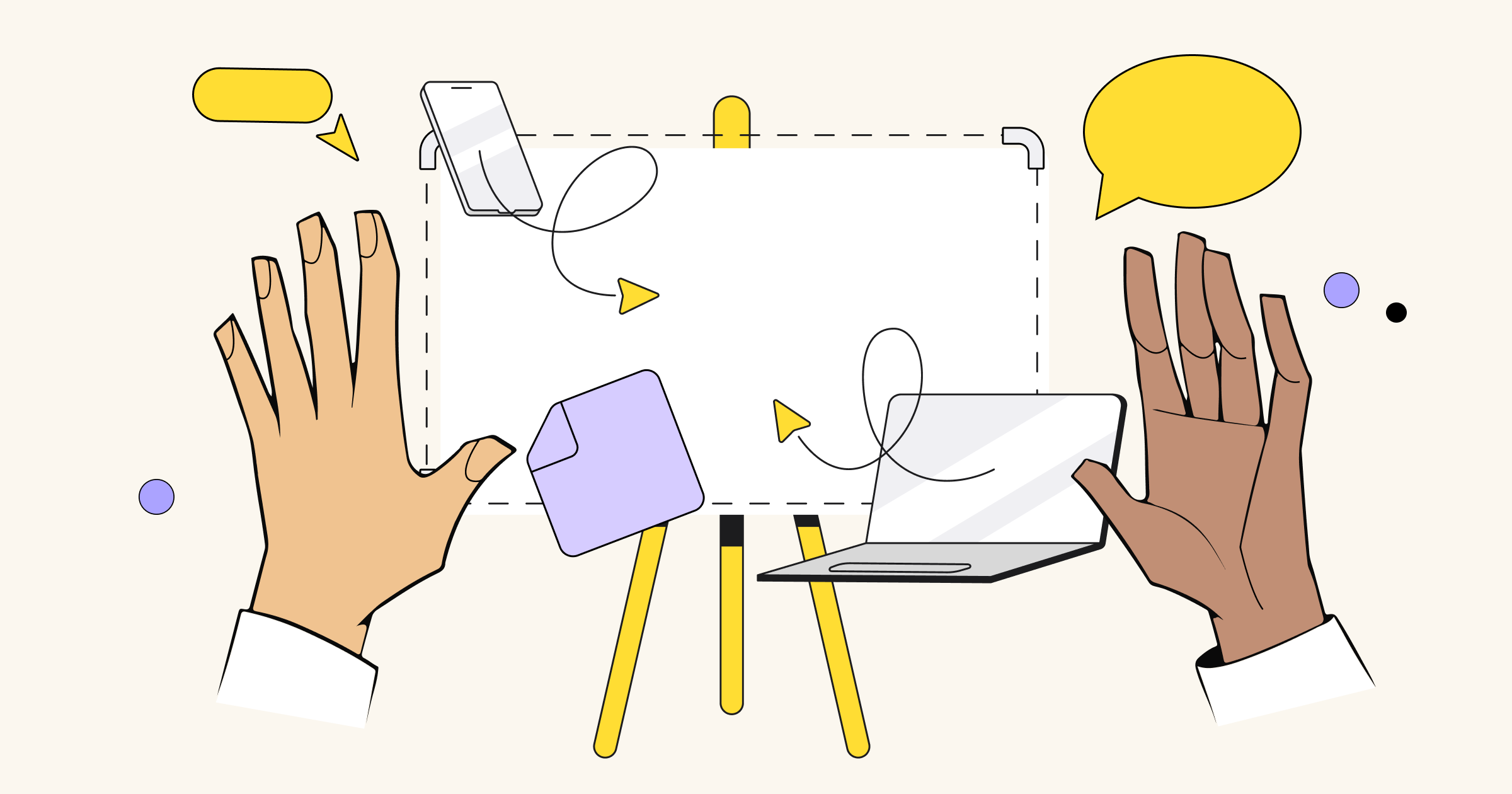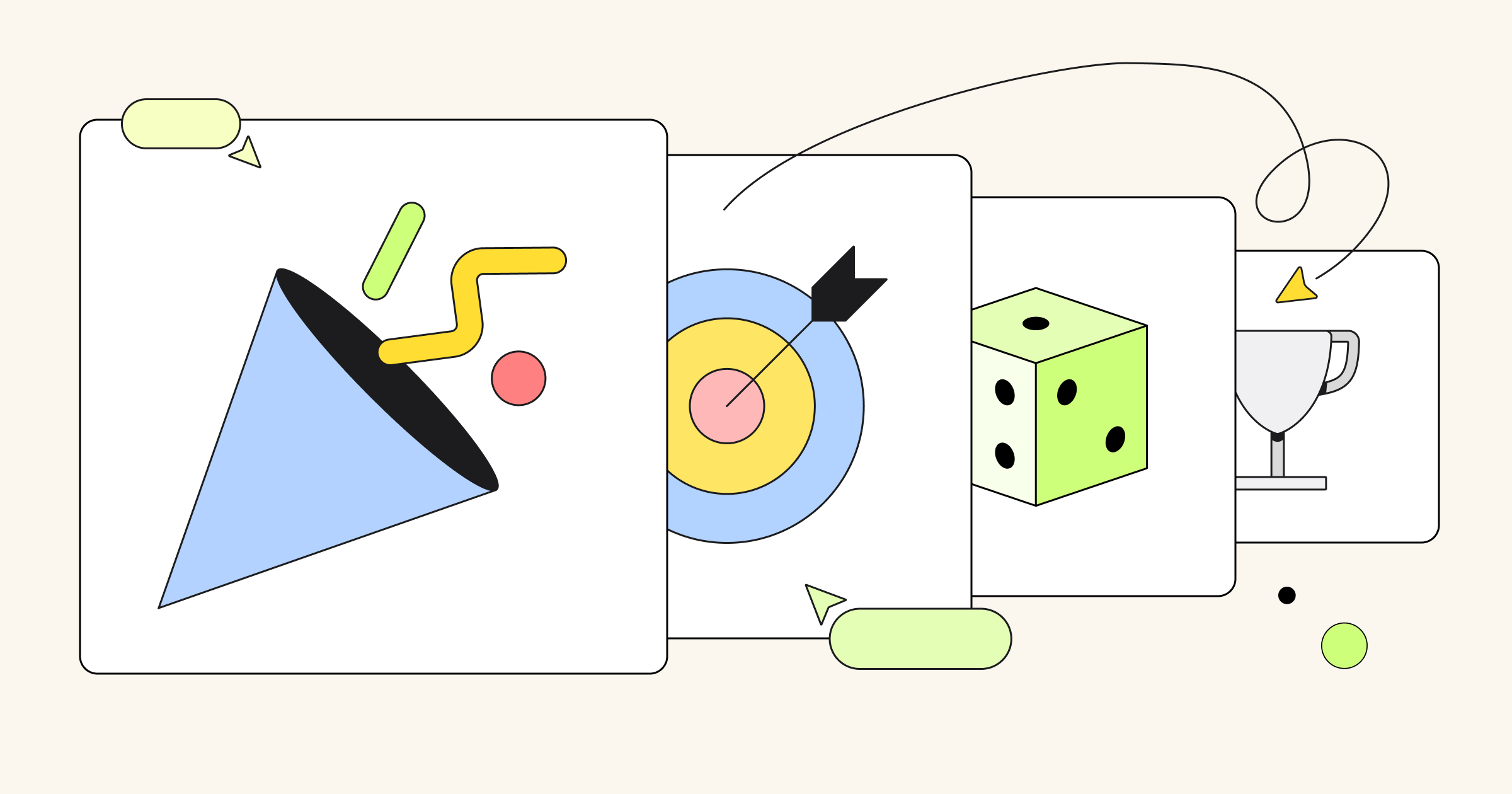From coding a website from scratch (ChatGPT) to synthesizing insights with just a click (Miro Assist), generative AI can generate novel content and perform tasks that traditionally only humans could perform, e.g. coding, drawing, writing, etc.
As generative AI democratizes access to information globally, it amplifies the quality and scale of creative outputs while reducing the cost of creation.
Despite its benefits, generative AI is not without its challenges, including:
- It lacks the ability to contextually understand our unique circumstances and establish deep connections to work with humans effectively,
- Its effectiveness depends on data sets from underlying large language models (LLMs)
- It can confidently make assertions that involve unfounded claims (“hallucinations”).
Embrace AI and human creativity to drive innovation in the workplace
To make real progress in accelerating innovation in the workplace, we need to:
- Ensure that generative AI tools align with our purpose, and
- Connect our creative power with generative AI tools to collaboratively tackle complex challenges together, not in isolation (i.e. not AI vs. human, but AI and human).
I refer to the human-AI collaboration in leveraging our collective creativity and expertise with generative AI tools as “Creative AI Skills” and “Creative AI Toolkit.” This synergy enables us to create new things at speed, accelerate the pace of discoveries, and amplify our creativity in the workplace.
Creative AI Skills serve as thought starters for re-imagining how our work can transform alongside AI, from amplifying our day-to-day productivity to facilitating collaboration and fostering continuous innovation.
Top three Creative AI Skills

Though there are 10 Creative AI Skills that enable you to develop a shared language on AI x Creativity, re-imagine how your work can transform along AI, and ultimately thrive in the workplace, there are three that are particularly critical for confronting the key challenges above.
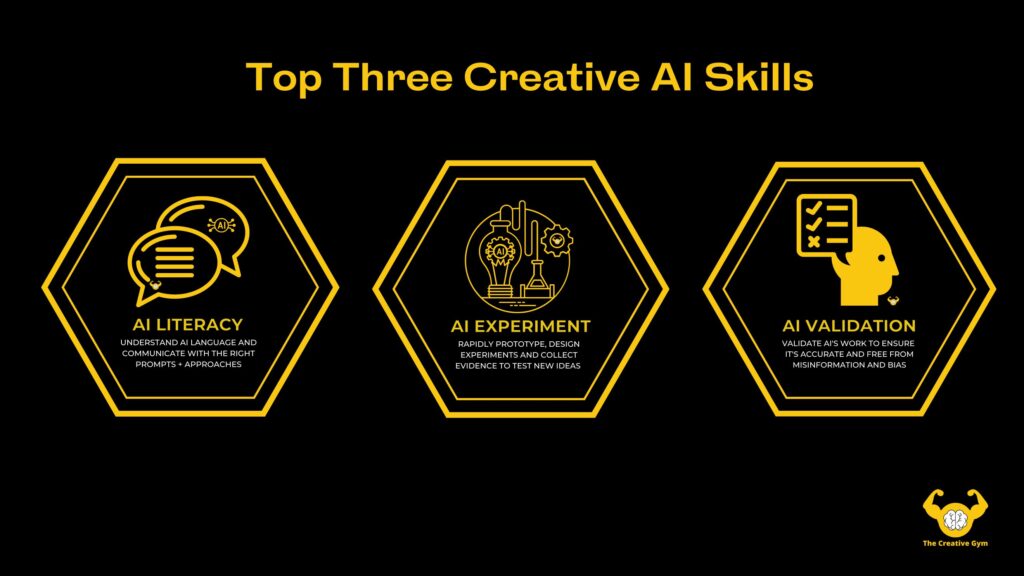
I called on a few of my knowledgeable collaborators from Stanford University for examples and insights to help bring these skills to life.
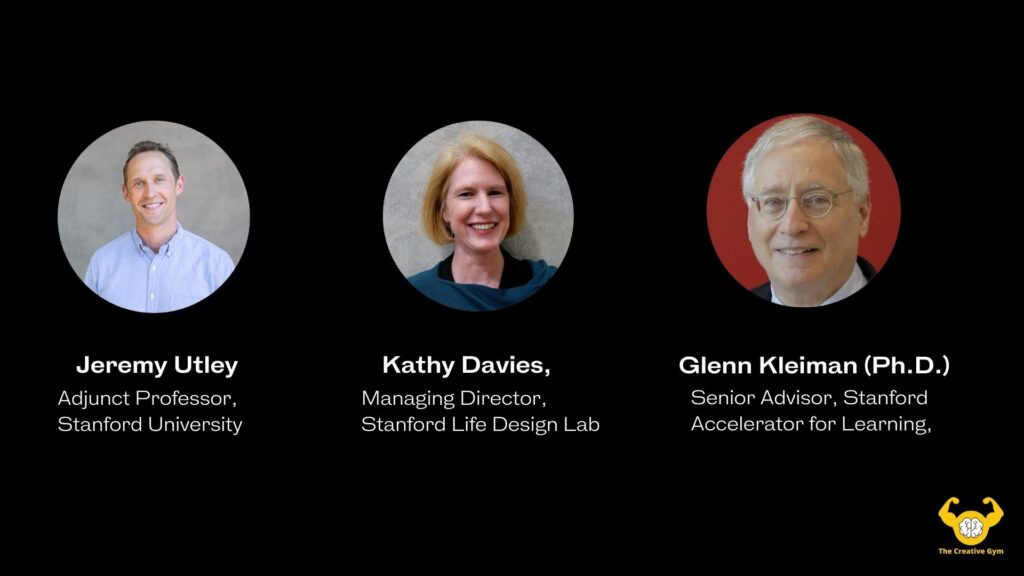
1. AI Literacy
Do you know how to have a conversation with generative AI?
“The wrong way to approach generative AI is like Google Search, looking for the answer. Instead, what you need to do is approach generative AI like a conversation partner. It’s a mindset shift from thinking about generative AI as an oracle to thinking and approaching generative AI as a thought partner.”
Jeremy Utley, Adjunct Professor at Stanford University & Thinkers50 Top Innovation Leader 2023
“For most organizations, the big question is: What percentage of our team is comfortable with AI? Right now, most people are fearful. So, how do you move people from fear through familiarity to fluency and fun on the other end of the spectrum?

To move from fear to familiarity requires what I call ‘personal epiphanies.’ You have to have a deeply personal experience with AI. Here’s the assignment I would give everyone as a starting point:
Think of a personal and emotional decision you need to make right now in your life that you would ordinarily ask another human about (e.g. ‘I have four daughters — how should I raise them in this day and age?’; ‘Should we move our family to a new house?’; ‘Should I retire?’; ‘Should we have kids now?’). Instead, ask ChatGPT: ‘Hey ChatGPT, I’d love to talk to you about this decision. Before you give me any advice, would you ask me four or five questions so that you can get to know me better? Then, please give me some advice about this decision.‘
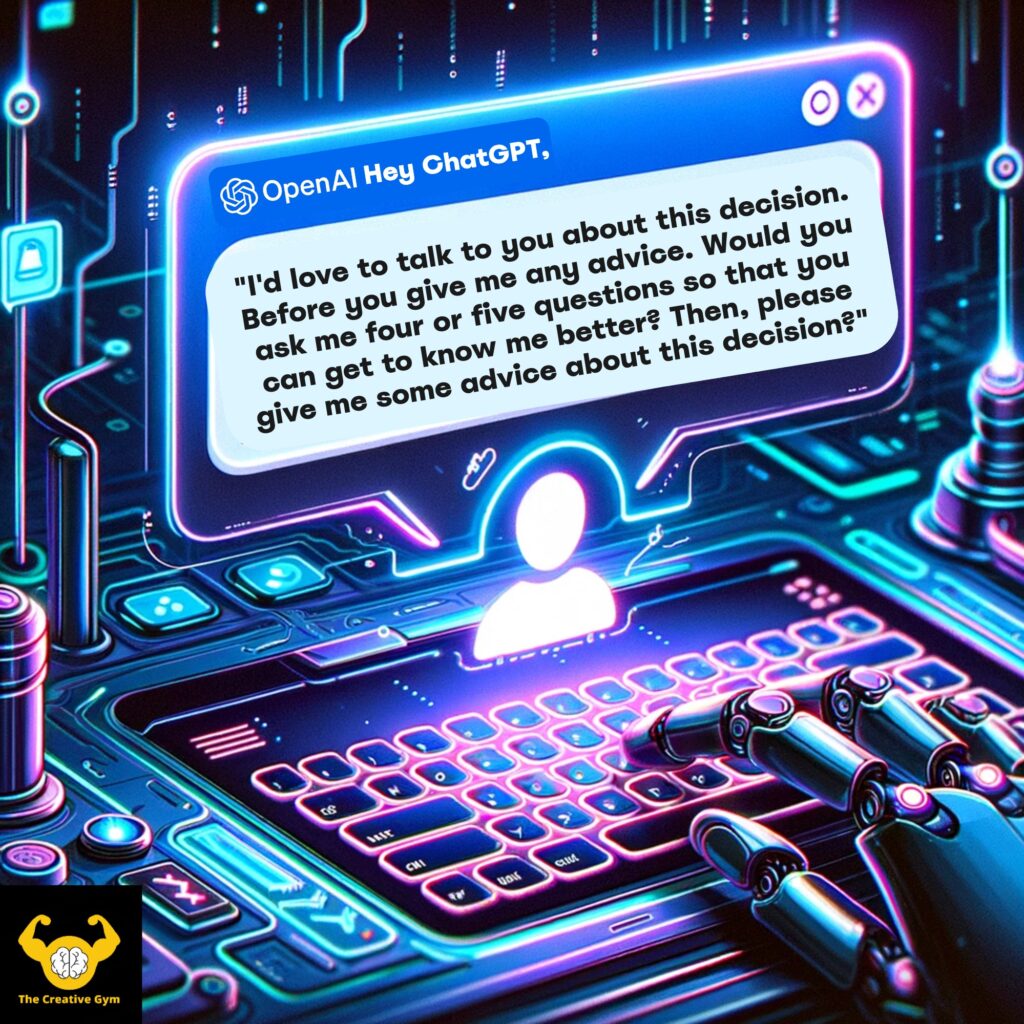
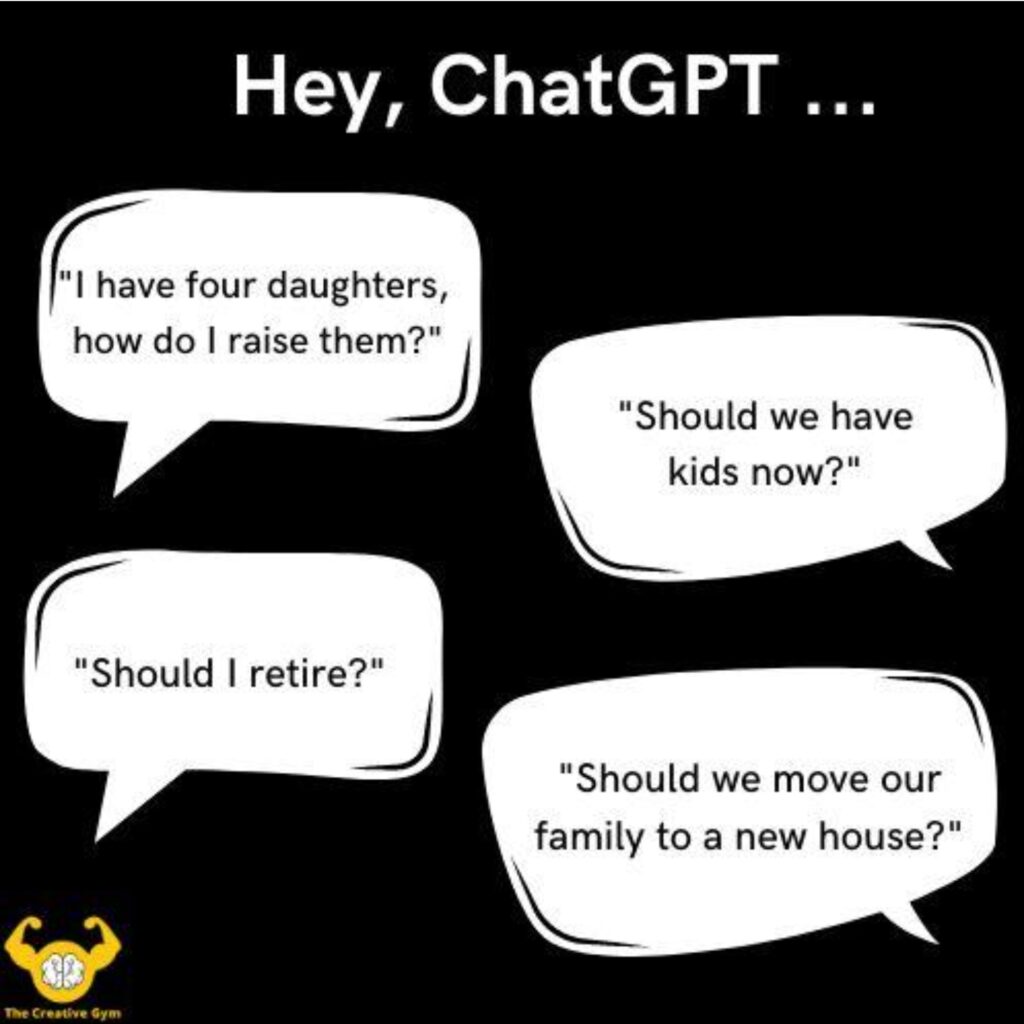
When someone does that, they will have a personal epiphany that will make them start to think: ‘Wait, could ChatGPT…? Yes!’ But it starts with a deeply personal epiphany.
Everybody is asking what generative AI can do for our companies. Nobody can answer that question because nobody knows the answer to the simpler question: What can generative AI do? You have to start with what generative AI can do, and then get to what it can do for our companies.”

Jeremy Utley is an adjunct professor at Stanford University, a General Partner at freespin capital, and co-author of Ideaflow, which Thinkers50 awarded a top honor for innovation in 2023. For over 12 years, he served as the Director of Executive Education at Stanford d.school. He’s the host of the AI-focused podcast beyondtheprompt.ai and the author of howtofixit.ai. His current passion is to spark 100,000 conversational epiphanies with AI.
2. AI Experimentation
“Life is intangible and full of uncertainties. How might we design and prototype our lives with AI tools?”
Kathy Davies, Managing Director at Stanford Life Design Lab
“We have students who are thinking about how to use particular skills or majors, but they may not have exposure to different jobs or roles in the world. That lack of exposure can limit their imagination of what’s possible.
In life design, we encourage people to create at least three different versions of how their future could unfold in the next five years. We call these multiple visions ‘Odysseys.’
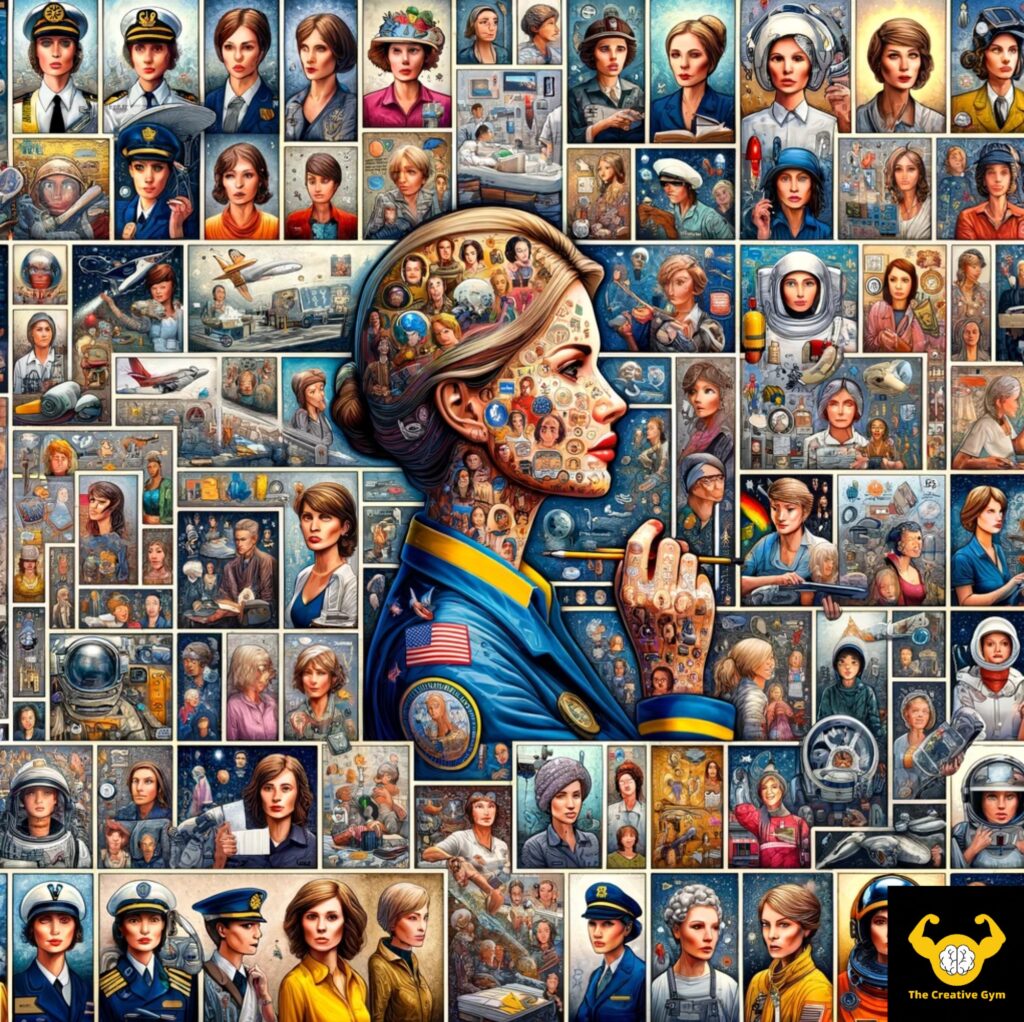
What if you could have 100 different careers in your lifetime?
Could you use generative AI tools to prototype and imagine a future life that makes you feel excited, empowered, and fulfilled?
Which Creative AI Skills could you cultivate to imagine multiple lives that are well worth living?
There’s something really powerful about using generative AI tools such as MidJourney, Stable Diffusion, and Dall-E to unlock your imagination and create different visions of your life that look real and tangible with words, images, and art. We can then look at and react to these artifacts as humans, tapping into our own emotional and cognitive responses. Imagine using AI to create pictures of three different futures for yourself:
When you see yourself in each picture, what does it feel like?
Can you see yourself as an astronaut, a captain, a mom — maybe all three?
What is your emotional reaction?
What questions do the pictures bring up?
Are you excited about these futures?
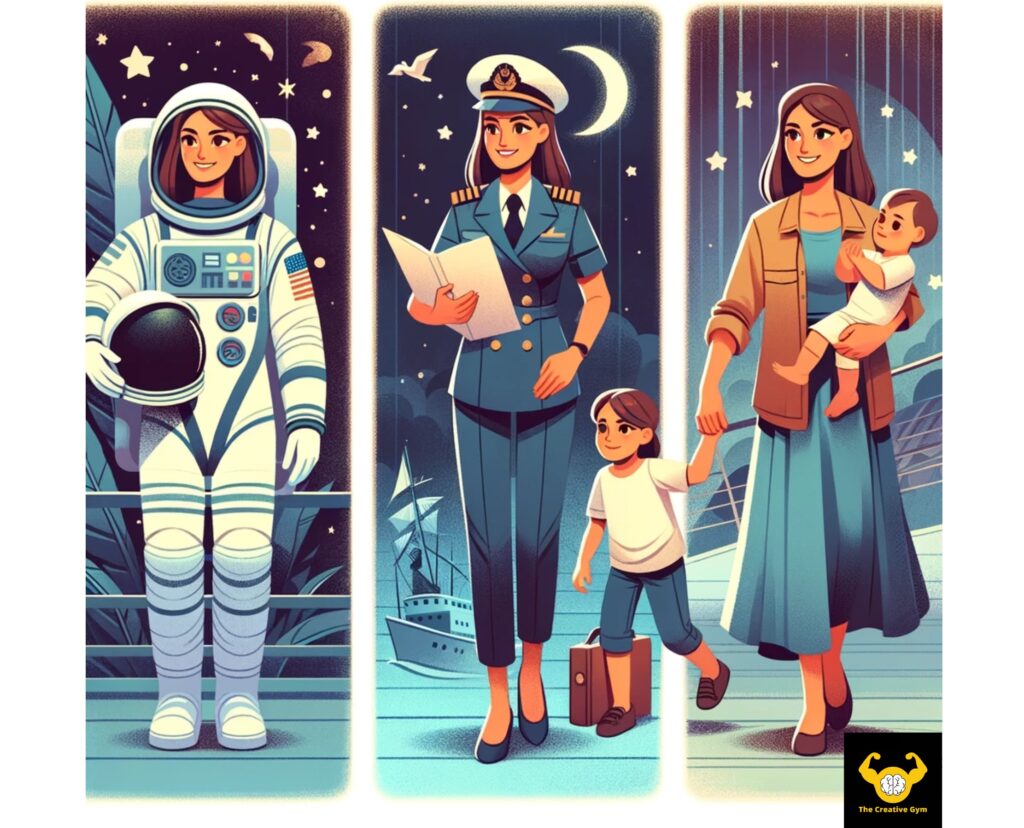
Prototyping your life with AI gives you new data to understand what’s worth doing and expands the range of what a rich and fulfilling life might look like. We’re going to get more data, gain new skills, and realize new strengths with AI. If we prototype our lives using AI tools, we can intentionally grow and change our future to explore our visions. This is a powerful position to be in.”

Kathy Davies, Managing Director at Stanford Life Design Lab, combines her mechanical engineering and biomechanics background with design thinking to shape lives and products at Stanford. Transitioning from product development to empowering individuals through innovation, Kathy advocates for human-centered design to foster creative confidence, personal growth, and community through teaching and consulting.
3. AI Validation
“Generative AI can create inaccurate information but appears confident that’s convincing for us to believe in. Limiting hallucinations, inaccuracies, and (importantly) misinformation requires thoughtful evaluation of AI-generated information.”
Glenn Kleiman, Senior Advisor, Stanford Accelerator for Learning at Stanford Graduate School of Education
“While AI experts seek to reduce the likelihood of hallucinations and inaccuracies and improve AI outputs in general, we must also address users’ understanding of AI and their expectations for what it will produce. Some people expect AI output can be perfected, but I’m skeptical. I see outputs that are erroneous and limited in quality as being part of the DNA of AI models.
In addition, the danger of AI being intentionally used to deceive and misinform is very real. AI users need to understand these limitations and carefully evaluate information in general since it has become impossible to separate AI-generated from human-generated information.
Unfortunately, the age of AI converges with the age of mistrust, which requires that we all learn to carefully evaluate the reliability and “truthiness” of what we see and hear.”
Taking this guidance from Glenn into account, consider cultivating your AI Validation Skill by:
- Sharing reliable data from high-quality, trustworthy sources with AI tools.
- Fact-checking the accuracy of the information through several sources like the internet, scholarly journals, and search engines.
- Clarifying your objectives with AI to ensure the AI’s output meets your desired outcomes.

Glenn Kleiman is Senior Advisor at Stanford Accelerator for Learning, Stanford Graduate School of Education, with advisory roles at TeachAI and CoSN’s driving K-12 Innovation. Glenn is on the board of North Carolina FIRST Robotics and Cary Academy and consults for NSF, the US Department of Education, WestEd, and more. His work focuses on leveraging AI in education.
Leverage Creative AI Skills to drive innovation
Kathy offers some surprisingly simple advice for taking the first step toward leveraging this powerful combination for good on individual, organizational, and global levels:
“When I was younger, what I was looking for was community and belonging and a purpose — to do the things in the world that matter. I would ask my younger self to consider: ‘How do you make the most of the AI tools available to you, given what you want to accomplish on this planet?’. At the end of the day, AI is just a tool, a tool for a thing you are trying to get done. Take advantage to learn, experiment, and prototype your future with these AI tools.”
We are in the early stage of generative AI and now it’s the time for you to explore the Creative AI Skills and the Creative AI Toolkit, and integrate them as part of your creative workflow to create change in your workplace.
